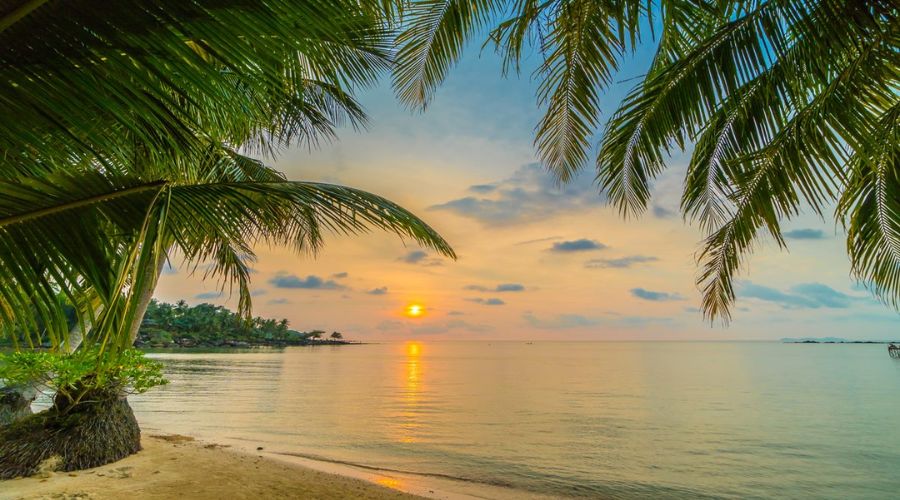The legendary beauty of the Andaman Islands stems out of their pristine, unspoiled natural environment, which boasts of lush tropical rainforests flanked by crystal-clear turquoise waters of the serene seas. The islands are loved by travellers and tourists and beach vacationers for their white sandy beaches. The coastal lines dance with the swaying coconut palms and are surrounded by dense mangroves. Underwater, vibrant coral reefs come alive with myriad marine life, making it a paradise for snorkelers and divers. The serenity of secluded coves and the enchanting beauty of the islands’ sunsets create an idyllic escape. The Andaman Islands also present a rich biodiversity, with flocks of unique flora and fauna. The allure of this coastal beauty as a coveted beach destination is mainly due to nature’s magnificence which is on full display.
Suggested Read: Trekking in Andaman and Scuba diving in Andaman
Do you Know How the Name ‘Andaman’ Originated?
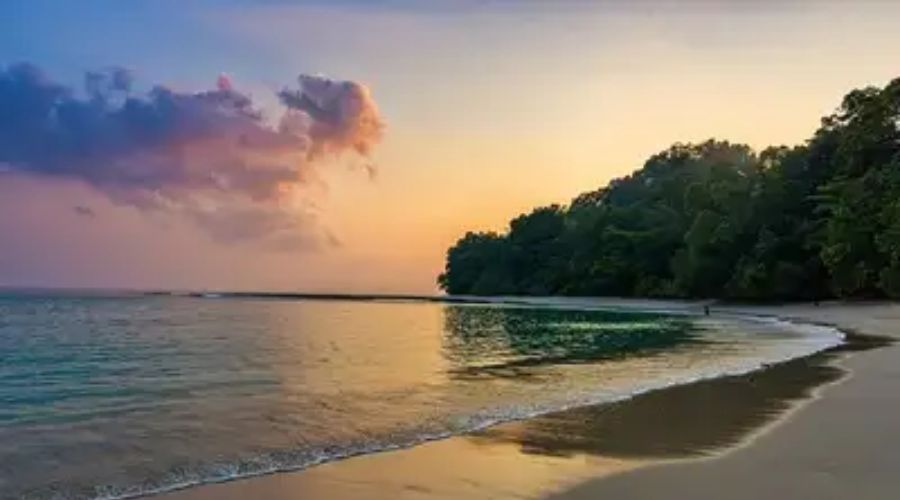
The name Andaman is commonly believed to have originated from the ancient name for the Hindu deity Hanuman. The early Arab traders often referred to the islands as ‘Handuman’ or ‘Andaman’ that seems to have been a derivation of the name Hanuman. Lord Hanuman commands immense reverence in Hindu mythology as a symbol of indomitable spirit, strength, perseverance and devotion. Over the decades, this name evolved to Andaman,’ which was eventually accepted by the colonial powers and continues to be used today to refer to this group of islands in the Bay of Bengal. The name reflects the long variegated history of cultural exchanges and influences in the region.
Suggested Read : Best shopping places in andaman
Languages Lost To Time
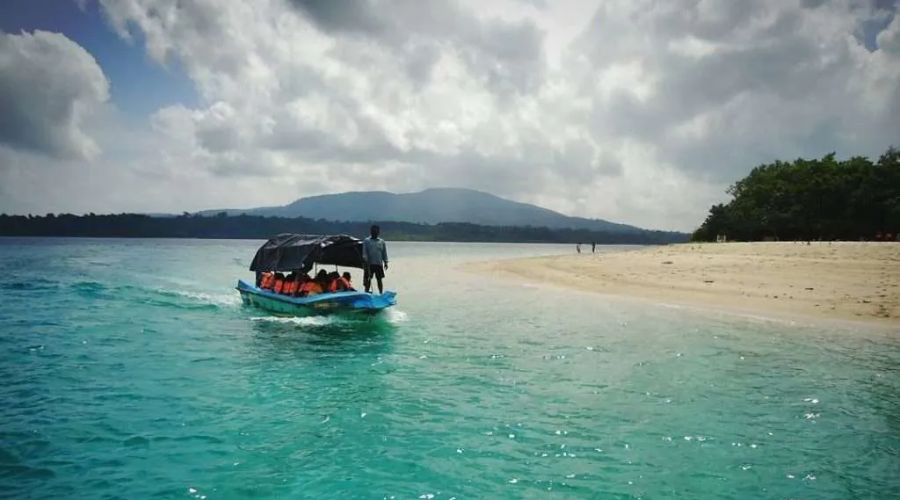
The Andaman Islands are not only known for their stunning natural beauty but also for their rich cultural heritage. Unfortunately, this heritage includes several indigenous languages that have been lost to time. The Andaman Islands were once home to several distinct tribal communities, each with its own language and culture. Over the centuries, due to colonization, diseases, and the integration of these communities into larger society, many of these languages have become extinct or critically endangered.
One of the most notable lost languages is Aka-Bo, spoken by the Great Andamanese people. The last known speaker of Aka-Bo passed away in 2010, marking the extinction of the language. Similarly, other Great Andamanese languages like Aka-Cari and Aka-Kora have also vanished, with only a few elderly speakers remaining.
Suggested Read : How to reach port blair
Lost Heritage and Tribal Legacy of Andaman
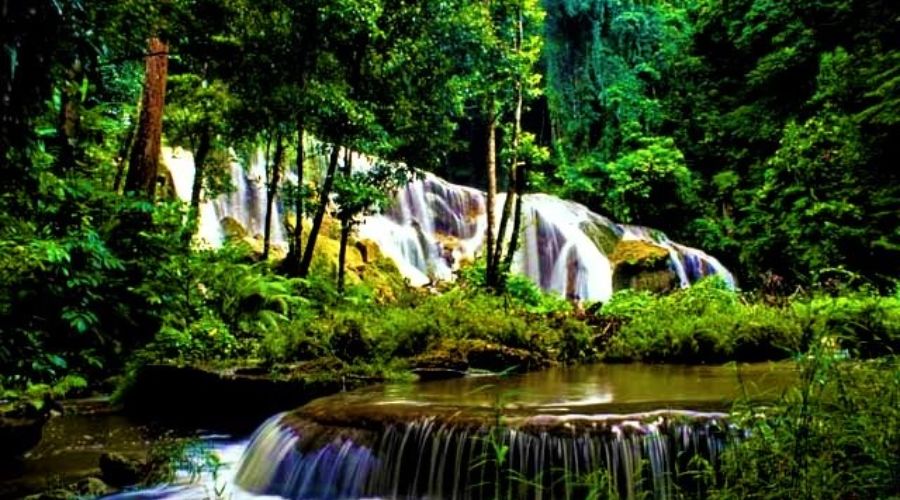
The Andaman Islands have a deeply rich and ancient tribal legacy, much of which has been lost over time due to various factors such as colonization, external influences and modern development. The indigenous tribes of the Andaman Islands—such as the Great Andamanese, Onge, Jarwa and Sentinelese—are among the oldest communities, believed to have settled in the islands thousands of years ago. They are still majorly alienated from the rest of the civilized world and maintain their own customs and traditions. These tribes carry the legacy of speaking unique languages, following unique cultures and traditions and have always been the object of attention, mystery, stories, research and amazement for the human race over the years.
Suggested Read : Sightseeing in rangat
To name some the primary indigenous tribes of the Andaman Islands:
- Great Andamanese
- Jarawa
- Onge
- Sentinelese
- Shompen (primarily from the Nicobar Islands)
With the infiltration of colonizers in the 19th century, followed by subsequent waves of settlers from the mainland, the way of life of these tribes have been deeply impacted. Diseases brought by outsiders decimated the population, and cultural assimilation led to the erosion of indigenous traditions. The Great Andamanese, once a large group consisting of ten distinct tribes, have seen their numbers dwindle significantly, and much of their cultural practices have been lost. With the passing of elders who carried the tribal knowledge, many languages and oral histories have disappeared.
Suggested Read : Solo trip in andaman
The Wondrous and Diverse Geomorphology of Andaman Islands
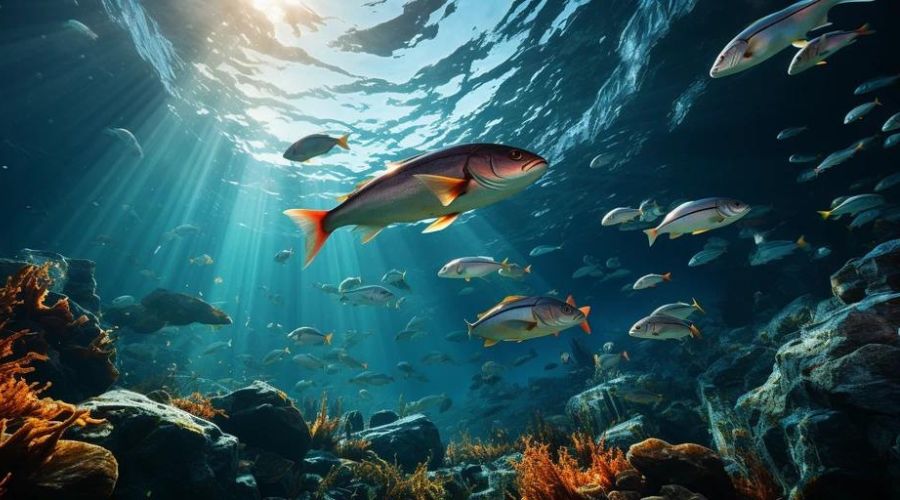
The geomorphology of the Andaman Islands is shaped up by the combined effects of a complex and dynamic tectonic activity, volcanic processes and the influences of the surrounding ocean. These islands are part of a volcanic arc chain in the Bay of Bengal, formed by the subduction of the Indo-Australian Plate beneath the Eurasian Plate along the boundary known as the Andaman Trench.
The Andaman Islands are part of the larger Andaman and Nicobar archipelago, which is an extension of the Alps-Himalayan mountain chain. The islands were formed primarily due to tectonic processes that involved massive movements such as the upliftment of sedimentary rocks and volcanic activity associated with the collision and subduction of tectonic plates.
The Andaman archipelago region is volcanically quite active. It has the only active volcano in South Asia, located in the Andaman Sea, named the Barren Island, which is a very popular tourist attraction. This volcanic activity is a direct result of the tectonic processes happening in the region.
Suggested Read : Lighthouses in andaman island
The islands exhibit a rugged topography where you notice a series of parallel ridges and valleys running in a north-south direction. These ridges are primarily made of sedimentary rocks such as sandstone, limestone and shale. These have been brought into effect as an aftermath of the tectonic forces.
And then how can we forget the diverse coastline of the Andaman Islands. Watch in awe the stunning rocky cliffs, super sandy beaches, dense mangrove forests and vibrant coral reefs. The coastal geomorphology is undeniably dynamic. It is influenced by the incessant action of the waves. The tidal currents and sediment deposition over the centuries have played their part. The eastern coastlines generally feature more sheltered bays and extensive coral reefs, while the western coasts are often steeper and more exposed to the open seas. Both have their own share of beauty and magic.
The extensive coral reefs that surround the Andaman Islands play a crucial role in shaping the coastal geomorphology. These reefs are primarily fringing reefs, although barrier reefs and patch reefs are also present. The reefs contribute to the formation of lagoons and protect the islands from coastal erosion. The extensive mangrove forests, particularly along the sheltered coasts and estuaries, contributes to the stability of the coastal zones. Mangroves encourage sedimentation and thus prevent erosion. They play their part in conserving the diverse ecosystems.
The Andaman Islands are quite susceptible to sudden activities of earthquakes on account of its location along the tectonically active plate boundary. The seismic activity not only affects the landforms but also carries the danger of triggering fierce tsunamis that might prove to be a veritable threat towards altering the coastal geomorphology.
Suggested Read : Game fishing in andaman
Andaman’s Violent Past – A History Giving Birth to Its Beguiling Destiny
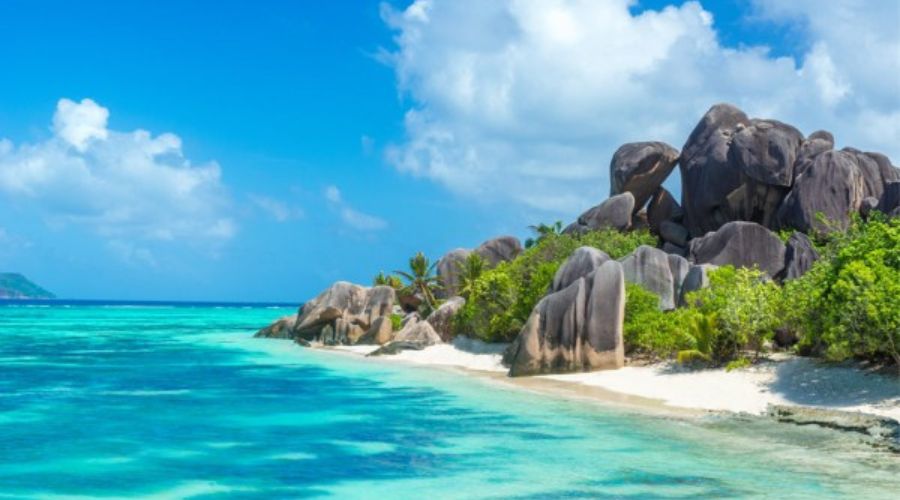
The history of the Andaman Islands is one of resistance against foreign domination, whether by colonial powers or modern forces. The bloodshed and war that have marked the islands’ past reflect the broader struggles of indigenous peoples worldwide to preserve their autonomy, culture and way of life in the face of external pressures. Despite these challenges, the resilience of the Andamanese proves to be an ideological example of a race with fierce indomitable spirit.
Pre-colonial era of Andaman’s history have seen unthwarted peace. Before the arrival of colonial powers, the Andaman Islands were inhabited by indigenous tribes such as the Great Andamanese, Onge, Jarwa and Sentinelese. These tribes lived in relative isolation leading a superbly simple life, relying on hunting, gathering and fishing. Their history has been passed down through generations and is not well-documented due to their reclusive nature and the lack of written records. In the late 18th century, The British first took an interest in the Andaman Islands during the late 18th century as part of their colonial expansion in India. The islands were initially surveyed by the British East India Company, but they were not settled until after the Indian Rebellion of 1857, when the British decided to establish a penal colony.
In 1858, the British established the infamous Cellular Jail in Port Blair, which became known as Kala Pani, which literally means Black Water due to the harsh environmental conditions. The jail was used to imprison Indian freedom fighters, including prominent leaders of the independence movement. The construction of the jail and the settlement of the islands led to conflicts with the indigenous tribes, who resisted the encroachment on their lands.
The tribal resistance resulted in their gradual obliteration. The indigenous tribes fiercely opposed British attempts to colonize the islands. The Great Andamanese, in particular, engaged in violent confrontations with the British, leading to a brutal suppression by the colonial forces. The British employed ruthless measures to subjugate the tribes, including armed expeditions, forced relocations and punitive killings. Over time, the indigenous population was decimated due to a combined effect of violent measures by the oppressors, diseases brought by the colonizers and the destruction of their traditional way of life.
Then came the dark days of World War II when the Andaman Islands were occupied by Japanese forces from 1942 to 1945. The Japanese occupation was marked by atrocities against the local population, including torture, executions and forced labour. The British eventually reclaimed the islands after the Japanese surrender in 1945.
After India gained independence in 1947, peace once more descended over the heavenly beautiful Andaman and Nicobar Islands. The Cellular Jail was shut, and the islands stood as a symbol of the sacrifices made by Indian freedom fighters. However, the legacy of colonialism did deep irreparable damage to the indigenous population. The history of the Andaman Islands still sees and experiences tonnes of challenges between the indigenous tribes and the Indian government. The Jarwa and Sentinelese tribes, in particular, have maintained their isolated stature. Occasionally, there happens violent encounters with outsiders who dare to venture into their territories.
Chatham Island Transitional History
Chatham Island, located in the Andaman and Nicobar archipelago near Port Blair, holds a significant place in the history of the Andaman Islands due to its role in the early stages of British colonization and the development of the islands. The island is especially notable for its connections to the timber industry and as one of the first sites where the British established a presence in the Andamans. The British interest in the Andaman Islands began in the late 18th century, but it wasn’t until after the Indian Rebellion of 1857 that they decided to establish a permanent settlement in the region. The island served as one of the initial bases for the British before they expanded their operations to the larger South Andaman Island.
Viper Island Pathetic Jail Saga
The island was one of the early sites of British settlement in the Andamans following their decision to establish a penal colony after the Indian Rebellion of 1857. The island was named after the British ship Viper that brought the first officials to the islands, which was wrecked near the island in 1789. The Viper Island Jail was constructed in 1867 and was used as a place to house convicts and freedom fighters. The jail was small and basic compared to the bigger Cellular Jail, but it was infamous for its cruel treatment of prisoners. It had small, dark cells where prisoners were kept in solitary confinement under extreme conditions. Today, Viper Island is a popular tourist destination for those interested in the history of India’s struggle for independence.
Japanese Bunkers and British Colonial Ruins on Port Blair and Ross Island
Ross Island is located just a short boat ride away from the capital of Andaman, Port Blair. Ross Island was the administrative headquarters of the British in the Andaman Islands from 1858 to 1941. Known as the “Paris of the East,” Ross Island was a thriving settlement that housed British officials and their families. It was equipped with all the luxuries of a colonial lifestyle, including bungalows, a church, a bakery, a hospital and even a swimming pool. Even today, the island remains loaded with remnants of these once-grand structures, now overgrown with banyan trees and other vegetation. The ruins of the Chief Commissioner’s house, which was the most prominent building on the island, still stand as a testament to the island’s past grandeur. The Presbyterian church, built in 1885, is another significant ruin, with its Gothic arches and crumbling walls evoking a sense of lost colonial glory. On Ross Island, the Japanese built several bunkers that are still visible today. These bunkers were strategically placed to provide lookout points and protect the island’s coastline. The bunkers, made of concrete, have thick walls and small openings for observing or firing weapons. They are a stark contrast to the British colonial ruins and serve as a reminder of the island’s wartime past.
Historical Emergence of Swaraj Island and Shaheed Dweep

Swaraj Island or Havelock Island is situated about 57 kilometres northeast of Port Blair and is the largest of the islands in Ritchie’s Archipelago. It is renowned for its pristine beaches, clear blue waters and rich coral reefs, making it a favourite destination for both tourists and divers.
Located about 37 kilometres south of Port Blair, Shaheed Dweep or Neil Island which is a smaller and quieter island compared to Swaraj Island. It is known for its serene beaches, lush greenery, and slower pace of life, making it an ideal destination for those seeking tranquillity and natural beauty.
To conclude, Andaman Islands offer a perfect blend of natural beauty, adventure and historical significance. These islands, with their stunning beaches, rich marine life and tranquil environment, continue to be among the top destinations for travellers and tourists who seek both relaxation and adventure in the Andaman and Nicobar Islands.


